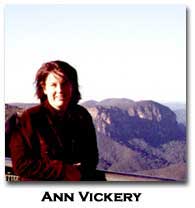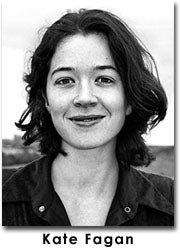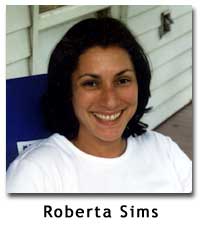

editor’s notes on How2/8 -- The Fold
by Ann Vickery
something—an extract or essence of something else; this work pressed
down unfinished overwritten refolded
(Rachel Blau DuPlessis, “Draft 20: Incipit,” Drafts 1-38, Toll, 130)
A fold suggest “something” turning on itself, bending, ripples or reflexion. In the new writing section, “Textual Reflexions,” contributors return to past forms, creating “something else” out of repetition. In doing so, there is a focus on what is often overlooked in mechanical or textual production, whether it be the labour involved, the presence of the person, or the shape of the form. But there is also a celebration of the new texts that emerge, a pleasure involved in the fragment itself and in the processes of overwriting, splicing and re-production.
In our other new writing section, “Southern Perils: Women Experimental Poets of the South,” it is the folds of the local that are accentuated. As coordinator Camille Martin notes, these writers acknowledge place as a daily, lived experience while complicating it so as to empty it of its worn, nostalgic and harmful associations. Contributors expose the provisionality as well as the charge of identity and regionality.
In this issue, we also feature a special section on H.D. and translation. More so than in some past issues, there is reflection on the act of translation itself and the role of the translator. Auxeméry views translation as a creative act, noting:
Translating these books by Pound and H.D. was not translating in the etymological sense of “carrying something across”…It was inventing paths where I was the only one who knew the twists, the resonances, the echo chamber that my involvement created.
This sense of inventing rather than “carrying something across” is explored at length in our two feature Readings section. While one section examines the work of little-known modernist poet, Lola Ridge, the other focusses on contemporary poet, Rosmarie Waldrop, who problematizes narratives of history and the act of recovery. Kornelia Freitag opens her introduction of the Waldrop feature by citing Waldrop: “The need to tell is rather a need to destroy, and the need to invent a need to reconstruct, differently.” In thinking about Lola Ridge’s work, there is a need not so much as to destroy as to place pressure on canonical formations in writing. There is a need to examine how the processes of forgetting are gendered or class-based. Ridge, as Catherine Daly and other contributors point out, is a difficult figure for modernism in that she does not fit neatly into the categories that traditionally defines it: she is both a lyrical and hybrid poet; she emphasized the reality of class and poverty via the abstractions of myth; she was transnational; and she was successful, even populist. While Waldrop teases out the presumptions and politics of the archive, Daly suggests that we think about alternative archives—ones that are less institutional, that might be able to foreground the slippery nature of the texts they ‘house.’ New technologies, she continues, provide us with unique opportunities to change the way in which we approach and present texts from the past.
A roundtable on Rachel BlauDuPlessis’s recent volume, Drafts 1-38, Toll, considers the way the present folds into the past, how it is always already engaged in poetic traditions, personal genealogy, and its relationship to larger historical forces. Her work mimics the textures of memory, “its unexpectedness, its flashes, its fragmentations, and its erasures.” The model DuPlessis turns to be illustrate this is the fold. As she notes in the very first draft. “connotations of impurities fill the fold.” Structurally, the second nineteen “Drafts” are donor “Drafts,” referring to their counterpart in the first nineteen. Yet, there are also random echoes between the “Drafts,” creating a kind of heteroglossic, impromptu dialogue. As Harriet Tarlo suggests, “The enfolded nature of the work prevents us from settling into reading the drafts either as a seamless whole or as a series of discrete pieces. Instead we find that we have a continual, overlapping sense of beginning again and again: we are always “incipit” (the title of the twentieth draft).”
Just as this first forum is concerned with writing in the face of the past, so to is the forum on “Memoire/Anti-Memoire: New York City Women Writers Recall September 11, 2001.” Borrowed from a recent issue of Chain, the first part of the title foregrounds the instability of memory, the fictions of witness. But co-ordinator Laura Hinton also views the genre of the memoire as a useful genre to explore the fold between the personal and the social—particularly in terms of a tragedy such as that which occurred on September 11. This section is not a sentimental revisiting/revisioning of events but rather examines the capacity and limitations of writing. Like DuPlessis, many contributors examine writing as its own event.
Both the multimedia and work/book sections further investigate writing in relation to lived experience. Mendi Obadike’s “keeping up appearances” investigates the invisible body and the folds of discourse—recuperating the voices that are socially blanked out. Using the form of a “hypertextimonial,” her work explores new ways in which one may read or see between the lines. The writing of Eileen Myles also seeks to put that which has been traditionally blanked out back into writing, such as the everyday or an active female sexuality. As Myles notes, she is constantly involved in a “weird dance of absence and presence.” Francie Shaw and Bob Perelman’s “Playing Bodies” takes as its focus broadly ambiguous figures of difference. They might represent male or female, animal or human, aggressor and victim, friends, or lovers. The various positions of these figures are suggestively open to interpretation, challenging appearances of control, power, and passion.
With this issue, the core production team experienced some major transitions in their personal lives. I moved back from the United States to Australia. Kate finished her PhD. And by a strange coincidence, Roberta and I both fell pregnant, Roberta only a few months after I did. These life-changes meant that we experienced some delays with the issue’s release and had to rethink HOW2’s immediate future. Accordingly, the next issue will be edited by Kate although I will remain closely in touch with her as a contributing editor. We have also been lucky enough to have Sydney-based writer, Pam Brown, agree to be a contributing editor for the next issue. I would like to thank all the co-ordinators and contributors of this issue for their patience and also to Roberta, for continuing her commitment with HOW2 despite the pressures of her work as Bucknell University’s webmaster and experiencing more than her fair share of the less attractive side-effects of pregnancy. Lastly, I would like to thank the editorial advisory board and readers of HOW2 for their ongoing support of the journal.
HOW2
 |
Editor-in-Chief: Ann Vickery vickery_ann@yahoo.com |
 |
Managing Editor: Kate Fagan kfag6311@mail.usyd.edu.au |
 |
Webmaster Roberta Sims rsims@bucknell.edu |
HOW2 Internet Address (Bookmark it!):
http://www.departments.bucknell.edu/stadler_center/how2
Review copies of recent books may be sent to:
Kate Fagan
26 Iredale street
Newtown, NSW 2042
Australia
go to this issue's table of contents